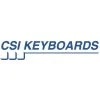Tactile Excellence in the Palm of Your Hand
In today's tech-driven world, where touchscreens dominate our devices, there's a resilient and reliable alternative that has been quietly serving us for decades: the rubber keypad. In this article, we will dive deep into the world of rubber keypads, exploring their intriguing features, wide-ranging applications, and why they continue to be a popular choice in various industries.
The Anatomy of Rubber Keypads
A Unique CompositionRubber keypads, as the name suggests, are primarily made of silicone rubber. This material is chosen for its exceptional flexibility, durability, and resistance to extreme temperatures and environmental conditions.
Tactile FeelOne of the standout features of rubber keypads is their tactile responsiveness. When you press a key, you get that satisfying tactile feedback, often described as a soft "click" or "snap." This feedback is not only reassuring to users but also helps reduce typing errors.
Customizable DesignRubber keypads are highly customizable in terms of shape, size, and layout. This adaptability allows manufacturers to create keypads tailored to specific user requirements.
Backlighting OptionsMany rubber keypads feature backlighting options, enhancing their usability in low-light environments. Backlit keypads are commonly found in remote controls, gaming devices, and industrial control panels.
The Manufacturing Process
Silicone MoldingThe process begins with silicone molding, where liquid silicone is poured into molds to create the keypad's base. This step determines the keypad's shape and structure.
Conductive PrintingConductive carbon pills or graphite are printed onto the keypad's base to create the contact points for each key. These conductive elements register key presses and transmit signals to the connected device.
Graphic OverlayThe top layer of the rubber keypad is the graphic overlay. This layer displays the key labels and icons, ensuring users know which key to press. Graphic overlays can be screen printed or digitally printed for intricate designs.
AssemblyAll the layers are carefully assembled, ensuring precise alignment of the keys with the conductive contact points. Adhesives are used to bond the layers together securely.
Quality ControlStringent quality control measures are in place to check every keypad for functionality, durability, and adherence to design specifications. Each keypad must meet these standards before being shipped to customers.
The Versatility of Rubber Keypads
Rubber keypads have a diverse range of applications, thanks to their resilience and tactile excellence:
Consumer ElectronicsYou'll find rubber keypads in everyday devices like TV remotes, game controllers, and mobile phones. They offer a comfortable and reliable typing experience.
Automotive IndustryRubber keypads are integrated into car key fobs, dashboard controls, and steering wheel buttons. Their durability makes them well-suited for the demanding automotive environment.
Medical DevicesIn medical equipment such as infusion pumps, blood analyzers, and diagnostic devices, rubber keypads provide a hygienic and user-friendly interface for healthcare professionals.
Industrial Control PanelsManufacturing facilities rely on rubber keypads for their ability to withstand harsh industrial conditions and provide precise control.
Aerospace and DefenseRubber keypads are used in aircraft cockpit controls, military equipment, and communication devices due to their durability and reliability.
Future Advancements
As technology advances, so do rubber keypads. Manufacturers are exploring innovations such as capacitive touch technology and enhanced backlighting options to improve user experiences further. These advancements are poised to expand the already wide range of applications for rubber keypads.
In Summary
While touchscreen technology may be in the limelight, rubber keypads quietly continue to be an essential part of our daily interactions with electronic devices. Their tactile excellence, durability, and versatility make them a preferred choice in various industries. As technology evolves, rubber keypads will likely remain at the forefront of user interface solutions, delivering tactile satisfaction to users around the world.


